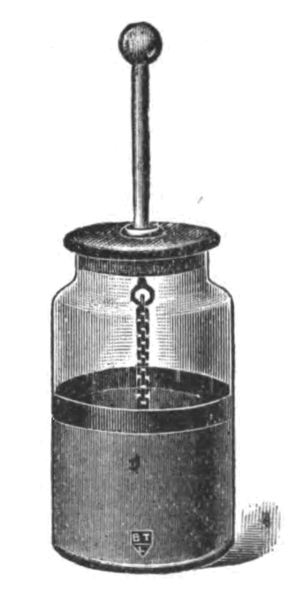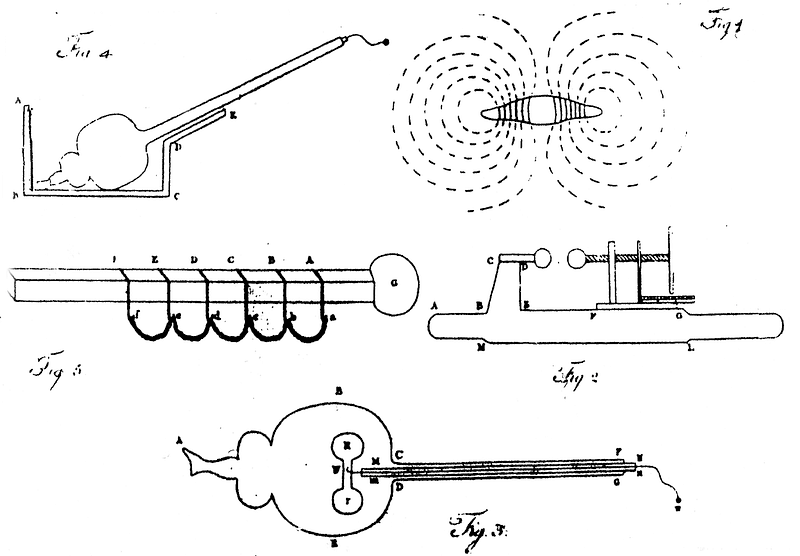The Unlikely Duo: A Fish and a Genius that Shaped Electricity
Written on
Chapter 1: A Force of Nature
This morning, I harnessed a natural force so immense that, for much of human history, its comprehension was believed to belong to the gods. Surprisingly, it took little effort. With just a flick of my finger, electricity surged to an LED light, brightening my room.
To us, this process seems effortless, and electricity has become a background presence—something we seldom contemplate, perceived as more mundane than miraculous.
However, our ability to manipulate this force is a relatively recent achievement. In the early 19th century, electricity confounded the brightest minds of the time, who regarded it merely as a novelty.
For instance, Benjamin Franklin famously hosted extravagant parties in America’s early years, where he showcased electrical wonders—barbecuing a turkey with electricity, electrifying wine glasses, and shooting sparks across rivers, much to the astonishment of his guests.
Yet, a remarkable twist of fate was about to unfold, involving a unique fish and one of the most eccentric geniuses in history. This tale, while it might sound like a plot from a B-grade comedy, illustrates how electricity evolved from a mere entertainment act to an indispensable tool.
To set the stage for this narrative, we must take a Jacques Cousteau-style dive into the ocean to meet our peculiar aquatic character: the torpedo fish.
Section 1.1: The Shocking Nature of the Torpedo Fish
The torpedo fish, classified as an electric ray by the Encyclopedia Britannica, is a bottom-dweller with a fascinating twist. Its flat body allows it to conceal itself beneath the sand while employing specialized organs to deliver a shock that incapacitates its prey.
Found in warm waters around the globe, the torpedo fish has been the subject of intrigue throughout history. Scholar Chau H. Wu, in the Journal American Scientist, notes that Plato likened Socrates’ profound questioning ability to the stunning effect of the torpedo fish.
Additionally, Aristotle’s pupil Theophrastus and Plutarch documented the fish's capability to transmit shock through different mediums. Theophrastus mentioned that its jolts could travel through spears, while Plutarch asserted they could be felt in water.
Unfortunately, my choice of words—“shock” and “jolt”—misrepresents their original interpretations. Many believed the sensation resulted from a sudden cold burst generated by the fish. Throughout antiquity, Greco-Roman healers even utilized the fish's unique ability to treat ailments such as gout.
For thousands of years, the torpedo fish remained a curiosity, until a resurgence of interest emerged in the late 1700s, coinciding with advancements in human-generated electricity.
Subsection 1.1.1: The Dawn of Human-Generated Electricity
In 1706, Francis Hauksbee invented a captivating “electrostatic generator” that produced electricity by spinning a glass wheel. To observers, this was almost magical. In the dark, ghostly sparks would appear when a hand touched the wheel.
According to Professor Jim Al-Khalili in his documentary "Shock And Awe: The Story of Electricity," this device rapidly gained popularity across Europe, inspiring a wave of enthusiasts who called themselves electricians. They employed the generator for entertaining tricks, such as charging their hands to surprise guests or igniting glasses of cognac with a spark.
However, one scholar had a more innovative idea. Pieter van Musschenbroek, a professor at Leiden University in the Netherlands, sought to store the electricity generated by Hauksbee’s machine. He envisioned electricity flowing like water and attempted to confine it in a jar.
He filled a glass with water, covered it, and connected a conducting wire from the generator into the jar, placing it on an insulator to retain the charge. Yet, nothing occurred. After several attempts, his patience waned.

Holding the jar, he cranked the machine and touched its top, receiving a shock so intense that it nearly knocked him over. Remarkably, this Leyden jar could hold its charge for hours, sometimes even days. It quickly became a sensation, leading to widespread experimentation with electricity—and, coincidentally, many more shocking experiences.
Many observers noted a striking similarity: the sensation from the Leyden jar mirrored that produced by the torpedo fish. However, they dismissed the possibility that they were the same, as electricity produced sparks while the fish’s power did not.
Section 1.2: The Scientific Debate on Electricity and the Fish
You might consider this a trivial debate—after all, who cares about a fish? Yet, the early scientific community was buzzing with discussions about the fish's abilities. Electricity was a new frontier, and this debate revolved around understanding its workings and essence.
Into this fray stepped a peculiar figure, Henry Cavendish—a man whose demeanor hardly suggested a titan of intellect. In fact, he was perhaps the most socially awkward individual ever. According to Bill Bryson in "A Short History of Nearly Everything," Cavendish was a man of privilege, yet he was also profoundly strange. His shyness was so extreme that any human interaction caused him deep distress.
Despite being part of the premier scientific society in England, he would flee from rooms if anyone dared speak or look at him. Nonetheless, he communicated through letters and became deeply engaged in the debate over the torpedo fish. His fascination led him to conduct an experiment of his own.
Chapter 2: Cavendish’s Groundbreaking Experiment

In 1773, Cavendish undertook a monumental task: he created a makeshift torpedo fish using a Leyden jar submerged in sand and water to replicate its electric discharge. The submerged jar produced a similar sensation both underwater and through the sand, despite skepticism from many who claimed it was impossible.
According to Wu, Cavendish demonstrated that electricity could traverse "parallel circuits," flowing through areas with lower resistance. He also discovered that the absence of a spark was due to lower intensity.
Al-Khalili explains that Cavendish distinguished between the quantity of electricity and its intensity. In simple terms, the fish emitted the same type of electricity as the Leyden jar, but with less intensity (no spark). To clarify:
- Leyden jar = high voltage but low charge
- Fish = low voltage but high charge
This distinction may seem trivial to some but holds profound implications for us all.
Section 2.1: The Lasting Impact of the Fish and the Genius
Ultimately, the insights gained from the fish debate paved the way for a groundbreaking realization: electricity was not merely a fleeting spark; it could be harnessed to remain constant. Thus, my light switch became a reality.
What began as an entertaining trick evolved into an industrial necessity. Leyden jars evolved into capacitors, now integral to every electronic device we use. Many foundational theories driving our modern world stem from an eccentric genius experimenting with a faux fish.
While we often take electricity for granted, we should never view it as merely “easy.” The simple act of flipping a switch is built upon countless discoveries and experiments—many involving shocks and visions of a flat creature hidden beneath a sandy blanket.
If you wish to explore more intriguing tales like this, please consider signing up for my mailing list. Joining Medium will also grant you access to other talented writers, and your subscription of $5 per month will help support my work, contributing directly to my electricity bill.
This video, titled "Can Our Infrastructure Handle An All-Electric World?" delves into the challenges and adaptations required for a future reliant on electric power, exploring the implications of our dependency on electricity.